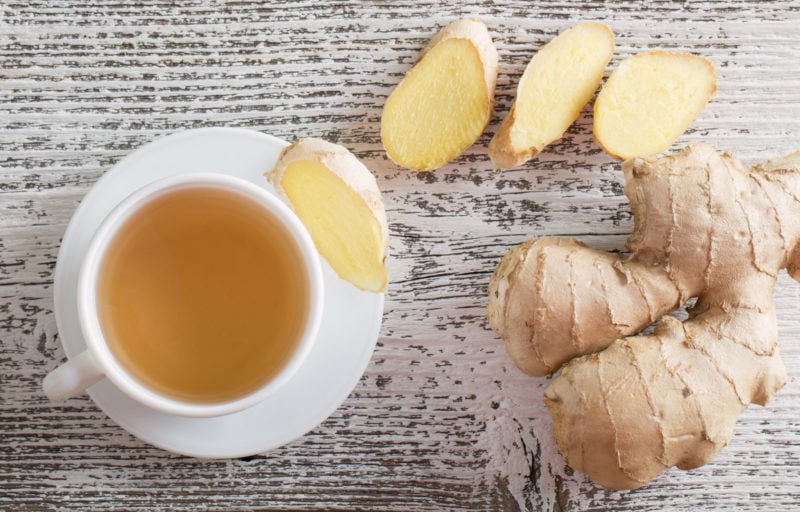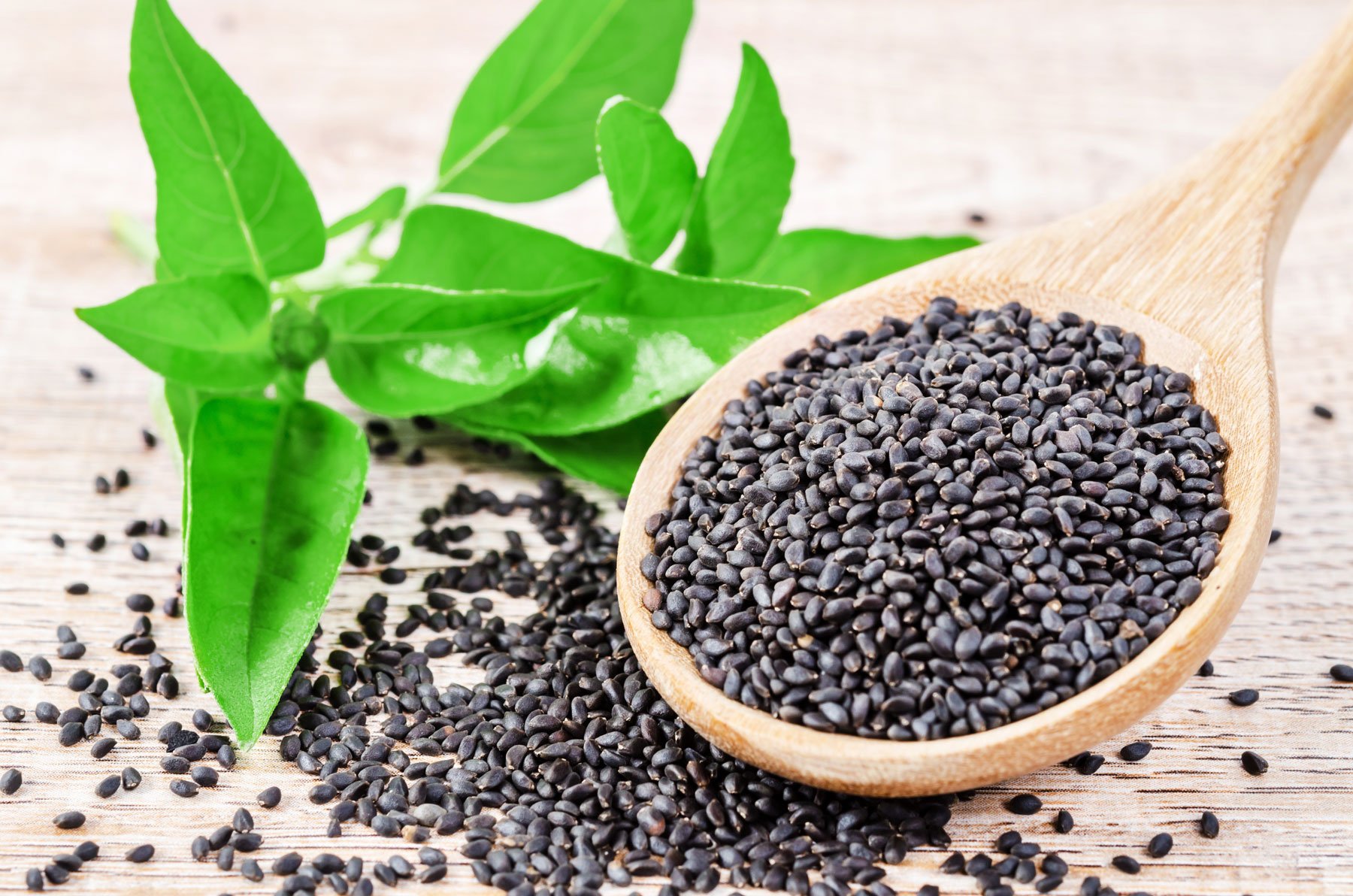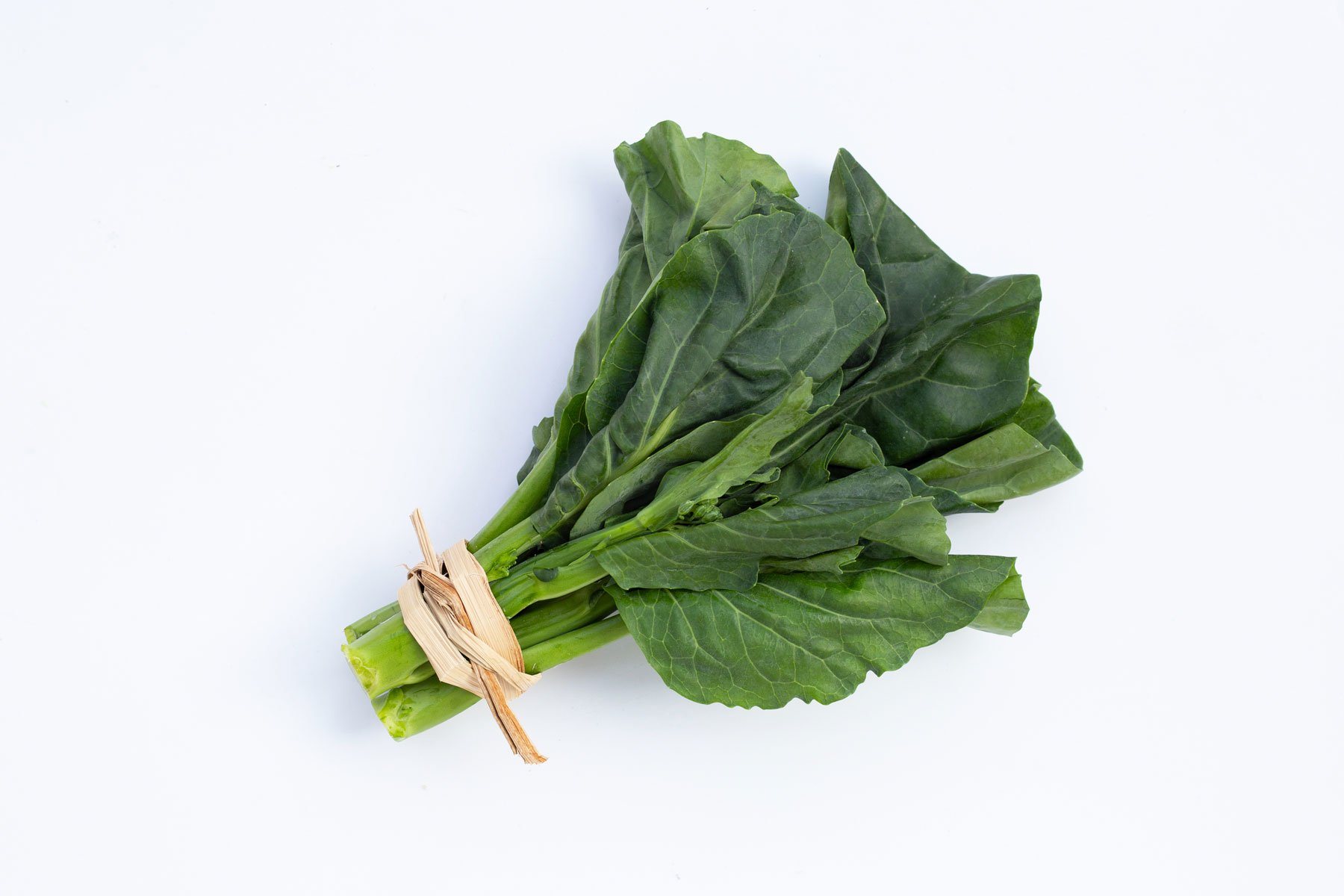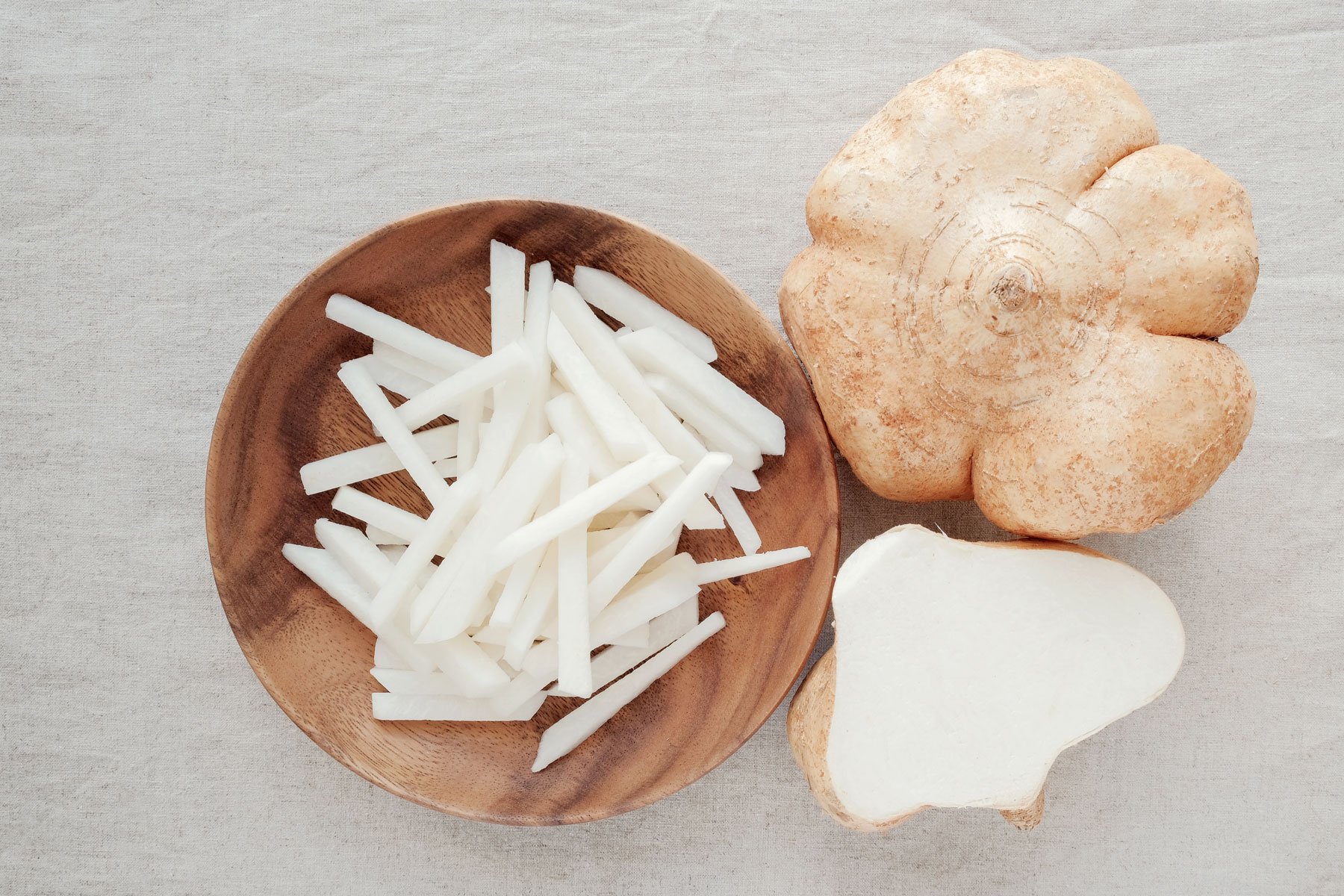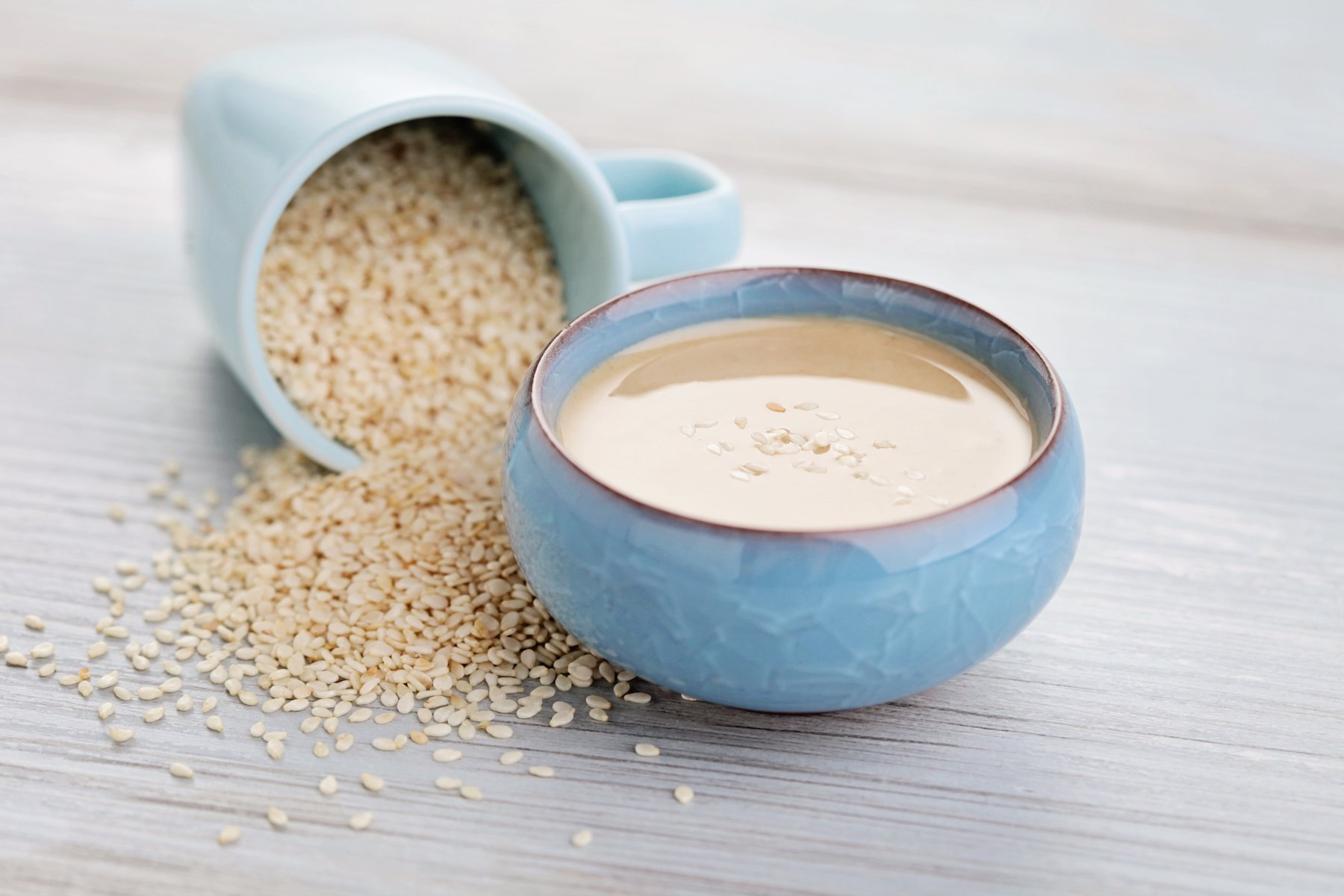The Basics on Ginger
The pleasantly spicy, peppery, and ever-so-slightly sweet ginger rhizome, or rootstalk, is native to several Asian countries (including China, India, and Japan) and has been a staple in cooking and herbal medicine for thousands of years.
While ginger (zingiber officinale) may be most widely known for its anti-nausea properties and ability to relieve various gastrointestinal symptoms, research suggests its benefits are much more widespread. Like turmeric (another rhizome), ginger may offer several metabolic benefits thanks to its many bioactive phenolic compounds, which include gingerols, shogaols, and zingerone. These compounds are responsible for ginger’s zesty flavor and have been shown to have anti-inflammatory, cardioprotective, glucose-regulating, and antioxidant properties.
Fresh, powdered, or dried ginger is also an affordable way to add health benefits and flavor to dishes like stir-fries, dressings, curries, soups, and smoothies—all while providing minimal calories and carbs, and no added sugar. One teaspoon of grated, raw ginger root contains just 1.6 calories, 0.4 grams of carbohydrates, and zero grams of sugar.
One of the Main Health Benefits of Ginger is Its Metabolic Punch
Two key metabolic perks of ginger are its antioxidant and anti-inflammatory properties. These are important, as oxidative stress (caused by an imbalance of free radicals and antioxidants in the body) and chronic inflammation are thought to pave the way for metabolic disorders. For instance, oxidative stress can trigger cellular damage and inflammation. In turn, this inflammation can drive issues like insulin resistance, diabetes, and heart disease.
Several bioactive compounds may be responsible for these antioxidant and anti-inflammatory effects of ginger. For example, gingerols and shogaols have been shown to impede the synthesis of pro-inflammatory molecules (i.e., prostaglandins and cytokines) and downregulate pathways that turn on inflammation-driving genes.
More human studies are needed to demonstrate these benefits. Still, several randomized controlled trials (RCTs; often considered the gold standard of research) suggest that supplementing with ginger curbs symptoms of osteoarthritis and rheumatoid arthritis—conditions associated with inflammation—without adverse effects. In one RCT, taking 500 milligrams (mg) of ginger powder capsules daily for three months was associated with reduced proinflammatory cytokines. In another trial, taking 1,500 mg of ginger powder daily for three months was associated with increased expression of FoxP3 genes, which can help keep excessive inflammation in check.
Ginger may also benefit blood sugar levels, triglyceride and cholesterol levels, and body weight. Though more research is needed to confirm the optimal dose for these benefits, a meta-analysis of 14 studies found that ginger supplementation was associated with significantly decreased body weight, waist-to-hip ratio, and insulin resistance, and significantly increased HDL cholesterol in overweight people and those with obesity. Additionally, an RCT examining Type 2 diabetes patients found that those who received 2 grams of ginger powder per day experienced significantly reduced fasting blood sugar, hemoglobin A1c, apolipoprotein B (a marker of potentially harmful blood lipids), and malondialdehyde (a marker of lipid oxidation) after three months compared to a placebo group. And a clinical trial with the same dose showed similar blood glucose benefits and an improvement in the LDL to HDL cholesterol ratio.
While daily ginger consumption is safe, some sources suggest capping your intake at 4 g per day to avoid GI side effects such as indigestion, which may occur with high doses. For reference, 1 g equals ½ tsp of powdered ginger or 1 tsp of grated, raw ginger. If you take a ginger supplement instead of fresh or powdered ginger, select a brand without added ingredients and follow dosage instructions. If you’re pregnant or taking certain medications such as blood thinners, anti-hypertensives, diabetic, or blood-pressure medications, consult your healthcare provider before supplementing with ginger.
Ginger Buying Advice
Various ginger options exist at your local grocery store: Fresh ginger, ground ginger (or powdered ginger), and ginger tea bags are all good picks. Ones to skip: Candied or crystallized ginger, pickled sushi ginger, ginger ale, and ginger beer, which typically contain added sugars.
While exact levels of beneficial phenolic compounds may be marginally different in fresh versus powdered ginger (e.g., gingerols are slightly reduced in powdered compared to fresh, while shogaols are more abundant), some nutrition and wellness experts consider both beneficial. Research also shows that ginger tea may be an effective way to quickly absorb beneficial ginger compounds, including gingerols. Since the benefits are similar, choose a form based on your preference.
- Fresh ginger root from the produce section of your grocery store is ideal for adding a potent punch of flavor to stir-fries, dressings, sauces, and smoothies, or for homemade ginger tea. If you’re not a fan of grating, slicing, or chopping, you can find organic, minced ginger from brands like The Ginger People to easily dollop into recipes.
- Ginger powder from the spice aisle also works well in recipes and is particularly handy for baked goods and desserts where you want a uniform texture. It’s also great in smoothies and stirred into yogurt or oatmeal alternatives. While it’s more concentrated than fresh ginger, it doesn’t have as much of a bite.
- Keep a box of store-bought ginger tea bags on hand to reap ginger’s benefits for minimal effort. Brands like Traditional Medicinals and Yogi are good options.
When buying fresh ginger: Look for a “hand” (i.e., a branching ginger rhizome) that’s firm to the touch, smooth, and has a pleasant spicy aroma. Avoid ginger with soft spots, cracked or wrinkly skin, or visible mold—all signs the rhizome is past its prime.
Tips for Using and Storing Ginger
Keep it simple: Fresh ginger doesn’t require any fancy preparation. To use ginger in stir-fries, dressings, marinades, sauces, and soups, simply grate off the amount you wish to use and add to your dish. For smoothies or creamy soups, toss a knob of ginger right in the blender.
Store whole ginger in the fridge or freezer: First rinse fresh ginger under warm water while wiping off any dirt with your fingers or a vegetable brush, then pat dry with a paper towel. Store in a sealed plastic bag or airtight container in your refrigerator’s crisper drawer for about three weeks. When you’re ready to use it, cut off only what you need. You can also keep ginger wrapped in plastic and placed in an airtight container in the freezer for up to three months—grate it straight from the freezer without defrosting.
Make a versatile ginger paste: To save time later, make your own ginger paste by peeling ginger (pro tip: use a spoon) and grating or pureeing it in a food processor. Dollop individual portions of ginger paste into a silicone ice cube tray, place the whole tray or put it in a zip-top freezer bag in a thin layer, and freeze for up to 6 months. Pop out individual portions of ginger as needed.
Eat it raw or cook it—both are healthy: Research suggests that heating raw ginger (i.e., in cooking or making tea) reduces its ability to scavenge certain types of free radicals and increases its ability to scavenge other types—likely due to the conversion of gingerols to shogaols. Switch things up to get the broadest range of benefits.
Ditch powdered ginger after two years. For optimal freshness, use powdered ginger within two years. Store in an airtight container in a cool, dry place.
Ideas for Eating Ginger
Ginger can complement sweet and savory flavor profiles alike. Here are some delicious ways to use it:
Fresh ginger tea: For a potent ginger tea, bring water to a boil and simmer thinly sliced ginger in a pot for about five minutes, then strain. For a mellower brew, pour boiling water over sliced ginger and steep for the same amount of time. To morph your tea into a spicy tonic with extra health benefits, add fresh lemon or orange slices, cinnamon, and a splash of apple cider vinegar.
Meat or fish topper: Spicy, pungent ginger is a great way to add complexity to meat or fish dishes that contain a decent amount of protein. Try it on steamed salmon filets or grilled grass-fed steak: Top your cooked protein with julienned or thinly sliced ginger and scallions, then drizzle with warm oil and soy sauce or coconut aminos. Serve over cauliflower rice, if desired.
Breakfast booster: To wake up your tastebuds, stir ½ teaspoon powdered ginger into plain yogurt and top with chopped apples, walnuts, and chia seeds, or add it to a low-carb oatmeal alternative made with chia, hemp hearts, flax, and nut milk; or make this protein-rich Green Ginger Fab 4 Smoothie from nutritionist Kelly LeVeque featuring 1 teaspoon grated, fresh ginger (which you can swap with ½ tsp of ginger powder).
Dressing, marinade, or stir-fry sauce: Whip up a single sauce that can act as a salad dressing, marinade for proteins, and stir-fry sauce. For a hearty, southeast Asia-inspired sauce that’s great on low-carb noodle dishes, blend coconut milk, almond butter, ginger, jalapeno, red miso, garlic, lime, dates, and cayenne.
Spiced grain-free granola: Use powdered ginger along with warming spices like cinnamon and cardamom to make a batch of grain-free granola. Simply toss a variety of seeds and chopped nuts (pecans, walnuts, pumpkin seeds, flax seeds, hemp hearts) with spices, sea salt, coconut oil, monk fruit, and vanilla, then spread on a sheet pan and bake at 350 F for 5-7 minutes.
Spicy ginger sauerkraut: Boost the metabolic benefits of sauerkraut (already pretty impressive) by adding ginger to your recipe. Try this tart, tangy, subtly sweet recipe featuring polyphenol-rich cabbage, grated ginger, radish, and thinly sliced apples. It’s delicious on grilled pork, salads, roasted veggies, and eggs.
DIY spice mix: Research has found that consuming a variety of antioxidant-rich herbs and spices—ginger, cinnamon, turmeric, basil, bay leaf, black pepper, coriander, cumin, oregano, parsley, red pepper, rosemary, and thyme—along with a meal high in carbs and saturated fat can help curb markers of inflammation associated with high carb and fat intake. Consider this motivation to whip up your own flavorful spice blends, so you get a variety of beneficial compounds in one place. This Moroccan Spice Blend (made with ginger, turmeric, cinnamon, and more) makes a great dry rub and addition to stews, curries, lentil dishes, and cauliflower rice.
Carrot ginger soup: You can add fresh or powdered ginger to any soup that needs a little warmth or spice, but this creamy, subtly sweet carrot ginger soup—featuring carrots, grated ginger, ACV, yellow onion, garlic, olive oil, and veggie broth—is a great place to start. Ingredients are cooked and simmered until soft, then pureed in a blender.
